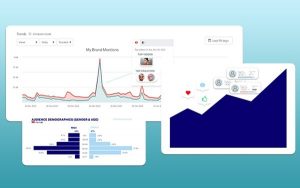How To Stop Wasting Your Money In Retail Media
Retail media networks are booming, with Marriott and Ulta recently entering the segment. Increasingly, they’ll be priority advertising venues, for two reasons: They connect directly with known shoppers, and they provide valuable behavioral insights.
With supply outpacing brand budgets, marketers need to get retail right.
I recently polled 39 brands; only 21% were happy with how they’re spending their retail media budgets. That’s because most marketers (61%, according to research we conducted in April) are making three critical mistakes:
Spending based on historical channel sales. Most brands allocate retail media as a percentage of channel sales. So, if Amazon represents 10% of sales, it will get 10% of the total ad budget. The approach precludes incumbent channels like Ulta and other important platforms like Instacart and GoPuff that aren’t technically retailers.
Making ROAS the default target metric. Many marketers have fixated on ROAS (return on advertising spend) because it’s easy to calculate and compare across channels. While this metric indicates profitability in advertising, this approach undermines growth brands that need to invest beyond immediate sales.
Foregoing a test-and-learn budget. Most brands neglect to allocate a small percentage of advertising budgets to new media platforms, advertising types, and strategies. As a result, they fail to create the space to innovate. Test-and-learn has compelling financial results: Advertisers that adopt new ad types within the first three months typically see 8% greater total sales than those that don’t.
There’s a simple solution: Allocate media budgets based on the marketing funnel.
Every retail media platform comes with its own universe of ad types and audience targeting options, each of which are suitable for a different stage of the shopping journey. Marketers need to map available options according to where target consumers are in the journey.
Doing so will identify the subset that precisely meets the brand’s ultimate objective, whether it’s awareness, consideration, purchase, or loyalty — so budgets can flow where the brand stands to gain the most.
Early results are promising. Using this model, one sports nutrition brand saw a 33% increase in its branded search term volume (its key performance metric) over a four-month period, and 10% year over year.
(15)
Report Post






